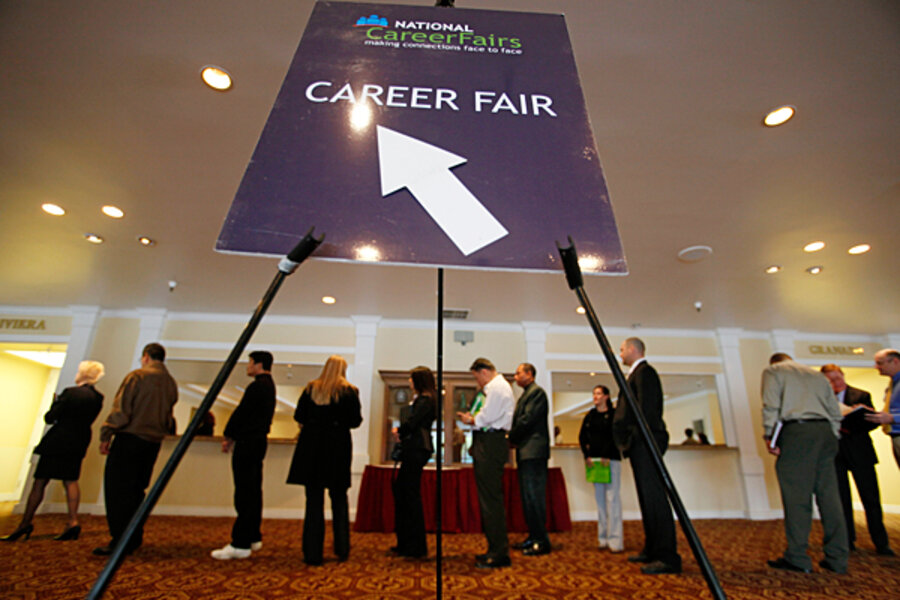With jobs being added, is US economy ready to stand on its own?
Loading...
America's first solid job gains since entering recession move the economy closer to a crucial point – where growth will come less from artificial stimulus than from self-sustaining demand.
Forecasters say the transition won't happen overnight, but it will come.
One important step may have just been taken. The economy added 162,000 jobs in March, the Labor Department reported Friday. The report came after more than two years of steep job losses, broken only by small employment gains in January and November.
One decent month is, at best, a starting point. The economy still has more than 8 million fewer jobs than when the recession began in 2007. Questions linger about how strong that recovery will be. And government stimulus programs continue to provide some of the key fuel for the economy's nascent revival.
Still, many economists say the private-sector economy is starting to gain some traction of its own – a modest return of consumer demand and more businesses ready to invest and hire. The March jobs numbers may be as good an indicator as any that a new phase of the recovery has begun – a process by which the training wheels of stimulus will slowly be outgrown.
"We believe that a self-sustaining recovery is under way," says Mark Vitner, who works on an economic forecasting team at Wells Fargo Securities in Charlotte, N.C. It's going to take time to bring down the unemployment rate, he says, but "the economy is strong enough to stand on its own."
That means, he says, that the risk of a relapse into recession is diminishing. (Many economists say that recession, which began in December 2007, ended some time during the second half of last year.) Stabilization is visible on many fronts, from consumer confidence and layoffs to bank earnings and global trade.
But Mr. Vitner also says the stand-on-its-own economy won't necessarily start sprinting forward. With government stimulus spending set to cool down later this year, the question is whether private-sector momentum will be strong enough to ease what is now a 9.7 percent unemployment rate.
The good news is, the economy seems to be performing better than many forecasters predicted a few months ago. The gross domestic product grew at a 5.6 percent annual pace in the fourth quarter, including a 19 percent expansion of business investment in equipment and software.
Some economists are raising their outlook for 2010. In January, Wells Fargo Securities was predicting 2.2 percent growth rate for the first quarter of this year. Now the firm sees GDP coming in at 3.4 percent when numbers are released later this month. Wells Fargo has also boosted its forecast for full-year GDP growth, to 2.9 percent.
The nation has now seen five straight months of gains in consumer spending. Exports are also rising, signaling the potential for demand from overseas to aid a US recovery.
"While there are still gaps in the case for a self-sustaining recovery, investors are becoming more convinced of its staying power," economist Robert DiClemente of CitiGroup wrote in a March report.
But plenty of factors temper hopes for a rapid jobs recovery. Households still have historically high debts, and there's so much slack in the job market that pay raises may be hard to come by. Forecasters at Goldman Sachs, among others, see GDP growth coming in at a more tepid 2.3 percent in 2010.
Peter Morici, an economist at the University of Maryland, calculates that the US needs to add 13 million jobs over the next four years to bring the unemployment rate down to 6 percent. He's factoring in not just the jobs lost during the recession but also the arrival of young first-time job seekers and the reentry of discouraged workers who dropped out of the labor force or have only marginal self-employment.
Such factors may explain why President Obama add notes of caution alongside talk of "beginning to turn the corner" in Friday remarks on the economy. Similarly, Federal Reserve Chairman Ben Bernanke, while acknowledging signs of improvement, doesn't seem close to withdrawing a stimulative monetary policy.





